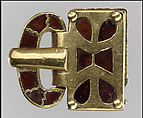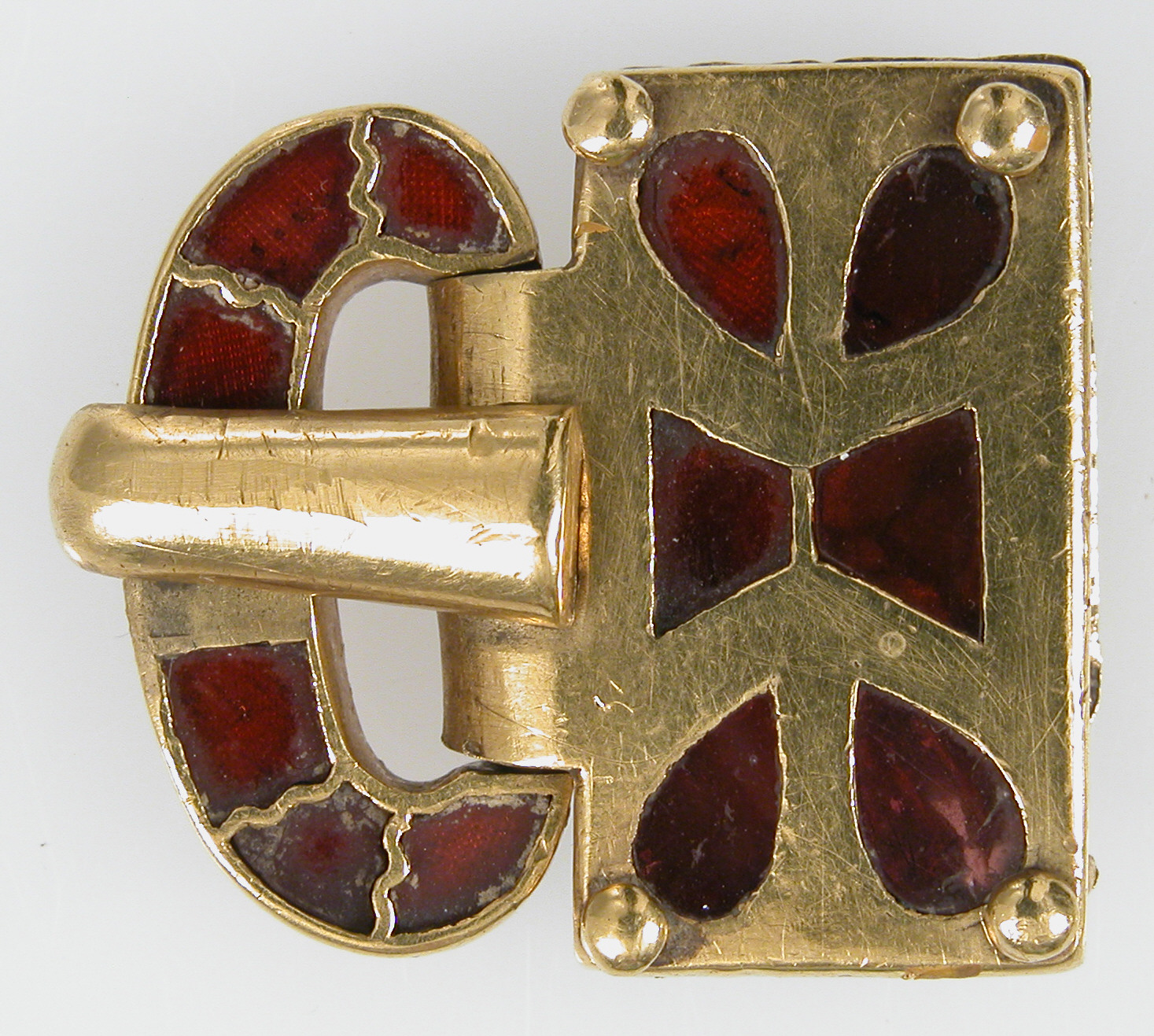Gold Buckle with Garnets
This buckle, dating from the first half of the fifth century, was discovered in Raab, Hungary. As it was found with silver-gilt and garnet sheath fittings from a battle dagger and sword (now in the British Museum), it may have come from the grave of a prominent leader. The fine workmanship and a rich combination of heavy gold and dark garnets argue that it may have been made in a central jeweler's workshop in Constantinople. Often tribal chieftains from outlying regions of Byzantium were given opulent pieces of jewelry or sword fittings by the emperor, as a sign of friendship and alliance (or as a small bribe). Kings and powerful men would also commission pieces privately from these workshops, as a tangible symbol of their wealth and connections to the powerful civilization in Constantinople, so it is entirely probable that this buckle traveled very far from its maker before being buried with its owner.
Due to rights restrictions, this image cannot be enlarged, viewed at full screen, or downloaded.
This artwork is meant to be viewed from right to left. Scroll left to view more.





